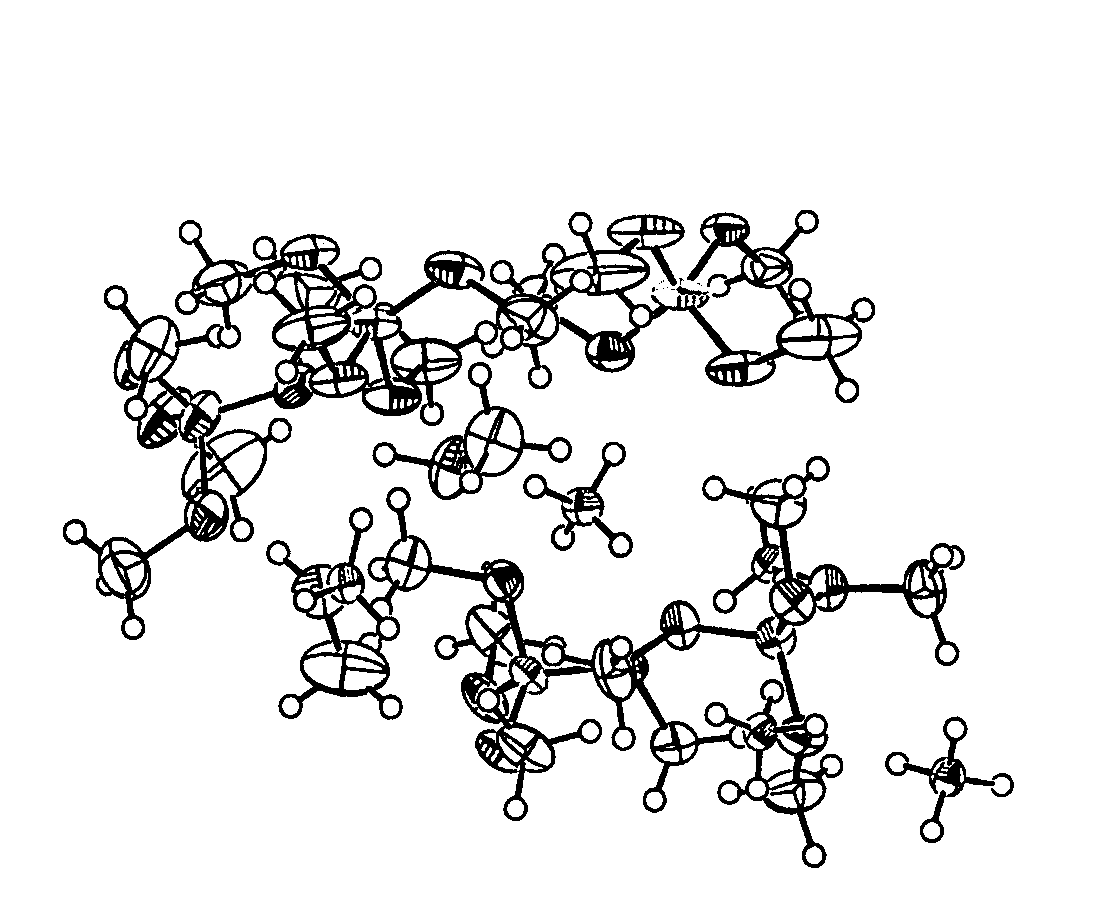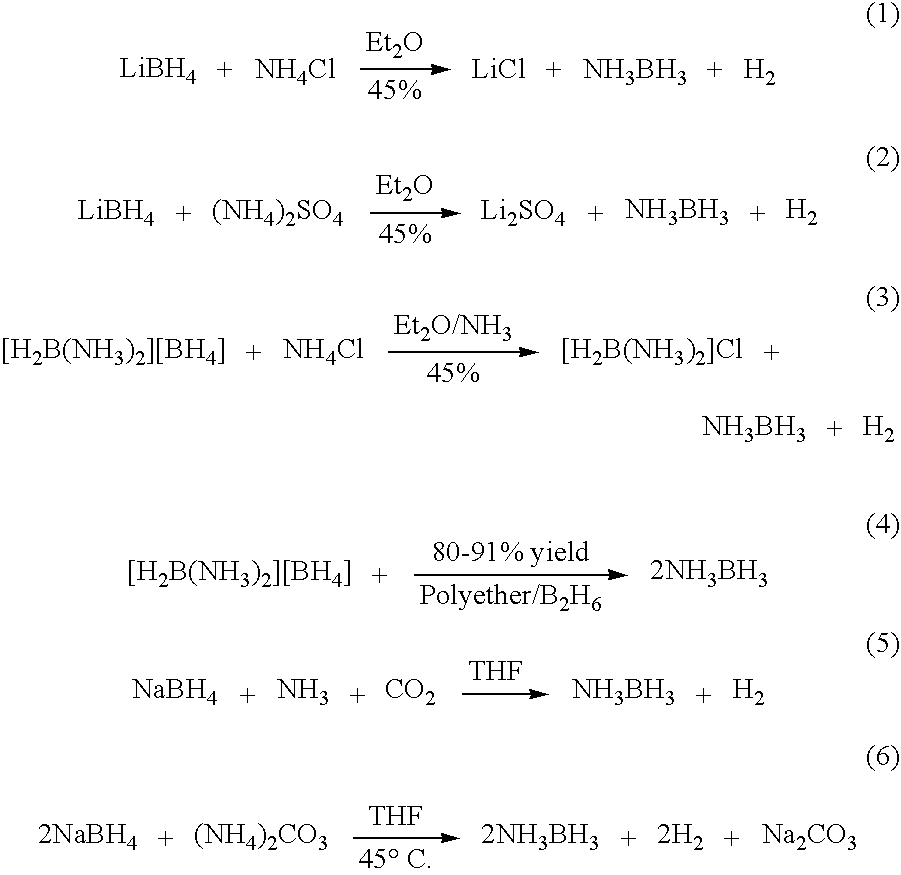Process for the synthesis and methanolysis of ammonia borane and borazine
a technology of ammonia borane and methane, which is applied in the field of ammonia borane and borazine synthesis and methanolysis, can solve the problems of inability to meet the needs of widespread use, and difficulty in isolation and purification steps,
- Summary
- Abstract
- Description
- Claims
- Application Information
AI Technical Summary
Benefits of technology
Problems solved by technology
Method used
Image
Examples
example 1
Preparation of Borane-Amines
[0036] Preparation of borazane from LiBH4 and reactions of LiBH4 with ammonium salts (for example, ammonium chloride and ammonium sulfate) in various solvents at different temperatures are examined. Increased yields of borane-ammonia are achieved by conducting the reactions of lithium borohydride with ammonium salts, such as ammonium chloride and ammonium sulfate, in THF at ambient temperatures (40° C.). Ammonium sulfate reacts faster than ammonium chloride and carbonate. Brisk filtration, followed by concentration, generates >95% chemically pure ammonia-borane in >90% yields. The purity of the material is determined by 11B NMR spectroscopy, elemental analysis and hydrolysis reaction.
[0037] The synthesis of borane-ammonia starts with trimethyl borate. The process of the present invention is based on the preparation of lithium borohydride by treating methyl borate with lithium hydride and aluminum chloride. The process involves the synthesis of borane-am...
example 2
[0084] Improved Procedure for the Preparation of Borane-Ammonia in THF
[0085] A further improved procedure is achieved for the synthesis of ammonia borane from sodium borohydride under ambient conditions in THF in a 97% yield and >98% purity.
[0086] In Example 1, the synthesis of ammonia borane uses lithium borohydride. However, lithium borohydride is generally prepared from sodium borohydride and is relatively expensive. An efficient and cost effective procedure is developed for the preparation of ammonia borane using sodium borohydride and ammonium salts in tetrahydrofuran at ambient temperature ranging from room temperature (RT) to 40° C. (0.165 M concentration with respect to sodium borohydride). Most of the solvent tetrahydrofuran (˜90%) is recovered and re-used. It should be noted that all of the operations are carried out in air, and thus inert atmosphere is not required.
[0087] Different ammonium salts, such as ammonium sulfate, ammonium formate, ammonium carbonate, ammonium...
example 3
Improved Procedure for the Preparation of Borane-Ammonia in Dioxane
[0102] In Example 2, an improved synthesis of ammonia borane is achieved in THF. The dilution of the reaction medium, however, remains an obstacle for preparation of ammonia borane in bulk scale. To increase the reaction concentration, a series of solvents are examined and it is observed that dioxane gives the best results. Since dioxane is the solvent of choice, different ammonium salts, such as ammonium sulfate, ammonium carbonate, ammonium nitrate, ammonium chloride, ammonium fluoride, ammonium formate and ammonium acetate, are then examined. It is observed that ammonium formate gives the best results. Thus an efficient and cost effective preparation of ammonia borane in 95% yield and 98% purity is achieved using sodium borohydride and ammonium formate in anhydrous dioxane (1 M concentration with respect to sodium borohydride) at ambient temperature ranging from room temperature (RT) to 40° C. Most of the dioxane...
PUM
| Property | Measurement | Unit |
|---|---|---|
| temperature | aaaaa | aaaaa |
| temperature | aaaaa | aaaaa |
| temperatures | aaaaa | aaaaa |
Abstract
Description
Claims
Application Information
 Login to View More
Login to View More - R&D
- Intellectual Property
- Life Sciences
- Materials
- Tech Scout
- Unparalleled Data Quality
- Higher Quality Content
- 60% Fewer Hallucinations
Browse by: Latest US Patents, China's latest patents, Technical Efficacy Thesaurus, Application Domain, Technology Topic, Popular Technical Reports.
© 2025 PatSnap. All rights reserved.Legal|Privacy policy|Modern Slavery Act Transparency Statement|Sitemap|About US| Contact US: help@patsnap.com



